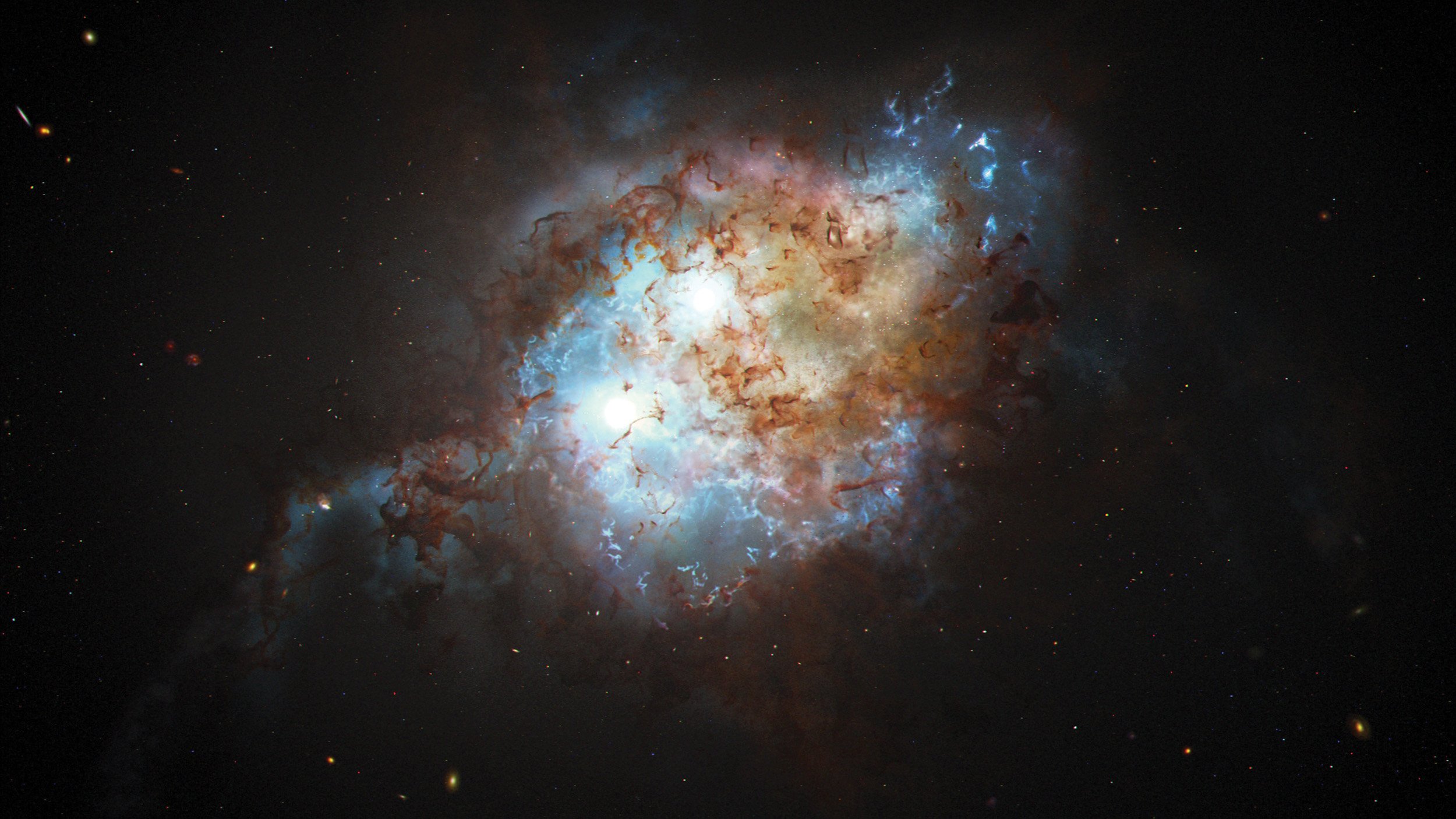Visualizing Science
Faith Singer
Cosmic Noon
Frontera enables researchers to find double quasar in early universe

NASA’s Hubble Space Telescope made an unexpected discovery — a pair of gravitationally bound quasars inside of two merging galaxies that existed when the universe was just three billion years old. An international group of researchers, including cosmologists from Carnegie Mellon University, reported the discovery in Nature.
Quasars are among the brightest objects in the universe and are created by invisible supermassive black holes, which live at the center of large galaxies.
Researchers have just recently been able to see quasars in the early universe because of the power of the current generation of telescopes like Hubble. Double quasars have rarely been observed but are thought to be a tell-tale sign of a galaxy merger.
“Understanding how black holes form, the first quasars emerge, and how they grow along our cosmic histories is one of the greatest theoretical and observational challenges of modern astrophysics,” said Tiziana Di Matteo, professor of physics and director of the Carnegie Department of Physics.
"Using TACC resources to store and analyze the petabytes of data produced by Astrid is allowing us to discover the origins of stars, galaxies, and what the important role of dual quasars may be."
“Quasars are small in size but play a fundamental role in how galaxies form and evolve into their present state. Observing early quasars, and in particular pairs of them, helps us understand how cosmic structures first form in our universe and the basic processes by which black holes grow.”
The quasar pair observed by Hubble comes from a time period known as “cosmic noon,” which is believed to be the peak of star formation and black hole growth. While astronomers believe that galaxies and black holes merged frequently during this time, they have only observed a few double quasars.
Key to furthering this research is cosmological simulations — and Di Matteo is a leader in the field. For the simulations, her team seeds a computer program with conditions about the early universe. As the simulation runs, researchers can witness possible scenarios about how the universe and given objects within the universe have evolved over time.
“Every galaxy must be modeled in exquisite detail, down to the very central inner regions, otherwise we won't be able to tell how any double quasars form. This level of detail is present all over the vast simulated universe, and this makes the calculation enormously challenging,” Di Matteo said.
She co-developed the galaxy formation simulation called Astrid, one of the largest cosmological simulations ever made. For this research, Di Matteo was awarded a Large Resource Allocation on Frontera.
“Astrid is currently the only simulation with the size, the level of physical realism, and the associated resolution needed to make predictions for these rare systems," Di Matteo said.
"Using the largest queue on Frontera we ran Astrid on 250,000 CPU cores. Using TACC resources to store and analyze the petabytes of data produced by Astrid is allowing us to discover the origins of stars, galaxies, and what the important role of dual quasars may be."
This research revealed valuable information about the properties of the quasar pairs and the supermassive black holes and galaxy systems where they live.

